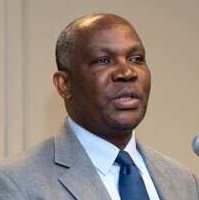 JBHE has published posts in the past on how the construction of Interstate highways in Minneapolis and Columbus, Ohio, negatively impacted predominantly urban Black neighborhoods. Now, researchers at the University of Delaware are conducting a study on the construction of Interstate 95 through the city of Wilmington.
JBHE has published posts in the past on how the construction of Interstate highways in Minneapolis and Columbus, Ohio, negatively impacted predominantly urban Black neighborhoods. Now, researchers at the University of Delaware are conducting a study on the construction of Interstate 95 through the city of Wilmington.
Nina David, an associate professor in the university’s School of Public Policy and Administration found that there were originally three proposals for highway construction in the city. Public hearings were held and it was expected that the highway would be routed around the western side of the city. But in 1957, the city council voted to bring the highway right through the Adams-Jackson corridor in the downtown area. In all, 507 residential dwellings, 50 commercial structures, 48 garages, two churches, one public school, one private school and one theater were demolished — and 926 families displaced — to make way for the highway. The highway split the city in two.
Dr. David’s research examines the Adams-Jackson corridor to document what was there before the highway, discern the policy decisions that led to I-95 being routed through the corridor and understand what might have been lost through the process, including the built environment (streets, buildings and landmarks), people (who lived and worked there), community (life and culture in the corridor and nearby neighborhoods), and institutions (churches and schools). The archival research includes content analyses of the plans, policy documents, reports and summaries of public hearings; analyses of newspaper articles published at the time; rephotography of the area; and interviews with residents from the corridor.
The impact of it was huge, because it was 25 city blocks,” Dr. David said. “That’s a big swath of a very dense urban core in the city. We are conducting interviews with residents that we could track, of families, that lived in that space to get the stories of what the community was like prior to 95 coming through. For a lot of people, the highway has been there for over 60 years, and that’s within their lifetime. That generation of the folks who lived in that space, this is sort of the end of a generation, so we wanted to capture the stories before they are lost.”












